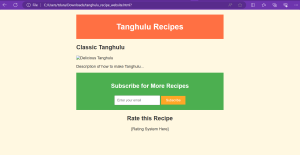Link to slides: https://docs.google.com/presentation/d/1P3Y2gwRw7T8v3TdYq5AH00DeQ0QfzeUYA7p6mK82_wk/edit?usp=sharing
With this series, I sought to represent the body and ways of control, and the many forms it can take in a more or less photorealistic style. I am fascinated by the limits and constraints of the human body and how we try various ways we try to overcome them. These images explore the innate limitations of the human body and how we feel controlled by them, as well as how parts of the human body can feel controlled, either by nature or society.
First is a human uterus surrounded by metal and chains. For many, a uterus often feels like a burden—with it comes an often painful menstrual cycle that returns month after month until menopause, and societal expectations to bear children. More recently, debates over reproductive rights and healthcare have made having a uterus, for me at least, feel like a chain by which much of society seeks to control my life, my choices, and my health—a very uncomfortable situation.
Next, I envisioned control in the form of surveillance and monitoring. Ankle monitors exist, so I wondered, “what is the most intimately horrifying place to have such a monitoring device on or in your body?” and what resulted was an image of multiple monitors in the spine, sandwiched between vertebrae where spinal disks normally would be. Can you imagine having your location constantly monitored by devices in your largest bone structure that cannot be removed without significant (and likely risky) surgery?
Returning to the uterus and control is a bloody menstrual pad with a horrifying monster emerging from the blood. I kept thinking about how menstruation sucks so I decided to explore that particular vein of thought a little more with its own image.
Also on the topic of blood is dialysis, another way in which control is exerted on the human body. Dialysis is a life-sustaining treatment that consists of a large machine drawing and filtering the blood when the kidneys are unable to, and then returning the filtered blood to the body. Dialysis patients usually go to treatment three times a week, with each session lasting about four hours. This is a significant amount of time taken for this treatment and patients are dependent on the machine to stay alive, another form of control.
Last is a much more broad, thematic image of control. In thinking about the human body, I become more conscious of the fact that our bodies are controlled by our brain—all internal, but another example of control nonetheless.
 AI generated HTML
AI generated HTML My HTML design
My HTML design